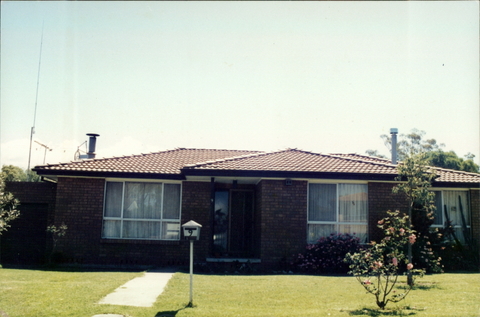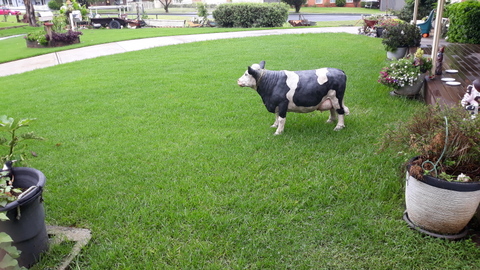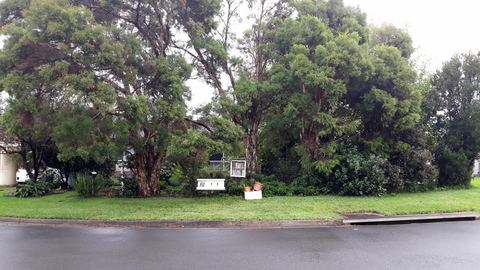The inspiration for this article series was provided by Vera Meyer in her presentation entitled “The Front Garden” to Permaculture Sydney west (7/2/2022)
Introduction
The great Bill Mollison himself referred to lawns as ‘green cancer’ and while I am not sure I totally agree with his summary there are certainly issues with the ubiquitous Australian suburban front lawn. Regardless of what we do in our back yard, most of us living in suburbia maintain a front lawn. Where I live here in St Clair, 90% of dwellings have a front lawn, with the odd bit of shrubbery to break up the monotony but lawn is the front yard ground cover of choice.
So, what are the problems associated with that?

Lawns are consumptive rather than productive
Most front lawns do not produce anything but grass clippings (which usually wind up in the green bin or being dumped) and in return for this leafy bounty they require of us –
- Fertilising – apart from the cost and effort to apply chemical fertilisers, excess fertiliser winds up running off into our waterways where they cause pollution and result in algal blooms which strip oxygen from the water when they die and decompose, harming or killing aquatic life, including fish.
- Watering – Australia is a drought country and water is precious, 40% of household water is used outside the home including to keep lawns happy and green. Again, if the lawn is overwatered, as well as water wastage, runoff can result in more pollution as mentioned above.
- Weeding and pest control – More often than not weeding is carried out chemically resulting in more polluted runoff and possible damage to beneficial insects.
- Mowing – unless push mower or sustainably charged electric mover is used, the result is noise, fossil fuel use and greenhouse gas production.
One lawn more or less is not the issue, but when all taken into account, about 11% of Australian cities are covered by lawn, equating to 4400 hectares, the size of the problem becomes clear.
Lawns are a monocultures, not biodiverse
Urban sprawl as experienced in our suburbs is destroying habitat at an alarming rate, taken into account that nationally 25% of Australia’s threatened plants and 46% of threatened animals can be found in our cities towns and suburbs. The front lawn is a part of this destruction, there is nothing much on the front lawn for insects, bats, birds or other animals. They are a monoculture, not supporting the diverse ecosystem we need around us to thrive.

Community
Unless you happen to see your neighbour mowing their front lawn, lawns do not generally support social interaction between neighbours or passers-by, they are just……lawns!
Amenity
I guess this depends on what you like to see around you. We like some privacy and our front lawn, as it was originally did nothing to support that. We looked out the front of our house to see…… more houses! Our lawn really did not provide a gorgeous vista to gaze upon, it provided grass.
Energy Saving
A front lawn provides open access for the sun and depending on your aspect this can be either a blessing or a curse. If your house faces east or west this can mean issues with summer heat gain, a northerly aspect can provide some winter warmth from the sun, but also provide unwanted heat during early and late summer unless the house is well designed.
And the Answer is?
The perfect way of dealing with the above issues is to, in the words of Vera Meyer: “de-lawn” your front yard! In simple terms this means, to a greater or lesser extent, replacing the grass of the front lawn with more useful and productive plant species and other fixtures.

Coming up:



